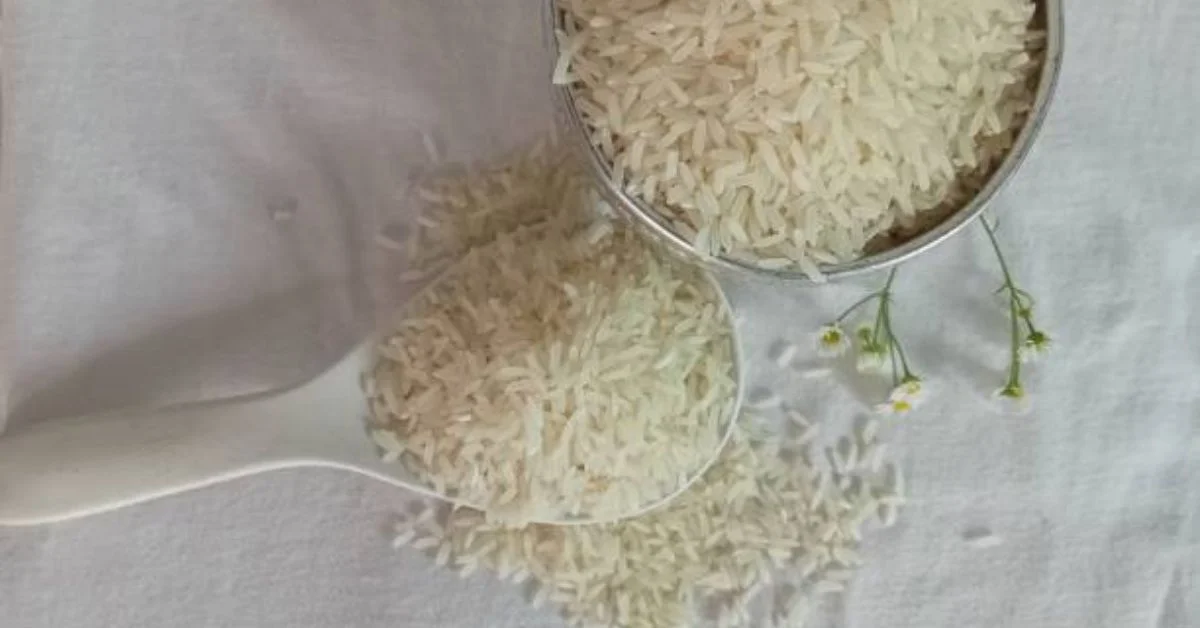Rice is more than just a staple food—it is deeply woven into the culture, economy, and daily diet of billions of people across Asia and beyond. Among the countless varieties of rice cultivated, one that holds a distinctive place in terms of fragrance, flavor, and traditional value is Banskathi Rice. This rice is cherished not only for its culinary appeal but also for its role in supporting the livelihoods of farmers in specific regions where it is grown.
In this comprehensive article, we will explore Banskathi rice in detail, covering its origin, physical characteristics, nutritional profile, cultivation practices, benefits, economic importance, and diverse applications in cuisine and commerce. We will also compare it with other rice varieties, highlight its role in traditional culture, and provide an outlook for its future in global food systems.
Understanding Banskathi Rice
Banskathi rice is a medium-grain aromatic rice variety primarily cultivated in parts of Eastern India, especially in West Bengal. The name “Banskathi” has a local origin: “ban” refers to bamboo, and “skathi” suggests slenderness or thinness, describing the elongated and elegant appearance of this rice variety. It is often compared with premium aromatic varieties such as Gobindobhog or Basmati, though Banskathi retains its own identity due to its medium grain size and strong, natural aroma.
This rice variety is widely used in households for daily cooking, festive occasions, and special dishes because of its distinctive fragrance and smooth texture after cooking. Unlike many hybrid rice varieties bred primarily for yield, Banskathi has retained much of its traditional flavor profile, making it a cultural as well as culinary treasure.
Physical Characteristics of Banskathi Rice
Banskathi rice stands apart because of its unique physical traits.
| Characteristic | Description |
|---|---|
| Grain Type | Medium-grain, slender, slightly translucent |
| Aroma | Naturally aromatic, strong fragrance even after cooking |
| Texture (Cooked) | Soft, fluffy, with a slight stickiness |
| Color | White with mild translucency |
| Length (uncooked) | 5–6 mm average |
| Elongation | Moderate elongation after cooking |
| Husk and Bran | Thin husk, light brown bran before polishing |
The cooked rice is light, aromatic, and flavorful, making it suitable for everyday meals as well as festive recipes.
Nutritional Profile of Banskathi Rice
Nutrition is one of the defining factors that determine the role of rice in human diets. Banskathi rice, like other medium-grain aromatic rices, provides a balance of energy, essential minerals, and moderate protein content.
| Nutrient (per 100 g uncooked Banskathi rice) | Approximate Value |
|---|---|
| Energy | 340–360 kcal |
| Carbohydrates | 75–77 g |
| Protein | 7–8 g |
| Fat | 0.6–0.8 g |
| Dietary Fiber | 1–2 g |
| Calcium | 7–10 mg |
| Iron | 1–1.5 mg |
| Magnesium | 20–25 mg |
| Vitamin B1 (Thiamine) | 0.2–0.3 mg |
| Moisture Content (uncooked) | 10–12% |
Although rice is primarily a carbohydrate-rich food, Banskathi also offers moderate protein, some dietary fiber, and essential micronutrients. When combined with pulses, vegetables, or meat, it forms a balanced meal.
Cultivation of Banskathi Rice
Cultivation practices play a crucial role in shaping the flavor, aroma, and quality of Banskathi rice.
Climatic Requirements
- Temperature: Optimal growth between 20–35°C.
- Rainfall: Requires about 1200–1500 mm rainfall or equivalent irrigation.
- Soil: Alluvial, clay loam, or medium fertile soils with good water-holding capacity are ideal.
Sowing and Plantation
- Traditionally grown during the kharif season (June–November) in Eastern India.
- Seeds are first sown in nurseries and later transplanted into flooded fields after 25–30 days.
Growth Cycle
- Average growth duration: 140–150 days.
- Requires 2–3 stages of fertilization with nitrogen, phosphorus, and potassium.
- Farmers often rely on organic practices, using farmyard manure to preserve the rice’s natural aroma.
Harvesting
- Harvesting occurs when the grains turn golden yellow and moisture reduces to 20–22%.
- Grains are sun-dried to bring down moisture to storage level (10–12%).
Storage
- Stored in jute or cloth bags in well-ventilated godowns.
- Retains aroma best when consumed within a year of harvest.
Advantages of Banskathi Rice
- Unique Aroma and Flavor – Strong fragrance makes it highly desirable for both home cooking and restaurants.
- Cultural Relevance – Used in traditional feasts and , especially in Bengal.
- Soft Texture – Retains fluffiness and slight stickiness after cooking, ideal for diverse dishes.
- Market Value – Higher demand in both domestic and export markets compared to non-aromatic varieties.
- Adaptability – Can be cultivated in medium-fertile soils and withstands varied climatic conditions.
Limitations of Banskathi Rice
- Moderate Yield – Lower yield compared to hybrid high-yielding varieties.
- Pest Susceptibility – Susceptible to stem borers and leaf blight if not managed well.
- Storage Sensitivity – Aroma reduces if stored for very long periods.
- Higher Cost – More expensive than ordinary non-aromatic rice, limiting access for low-income households.
Culinary Uses of Banskathi Rice
Banskathi rice is celebrated for its versatility in cooking. Some popular uses include:
- Daily Meals – Pairs well with lentils (dal), vegetables, fish, or meat curries.
- Special Dishes – Used in pulao, fried rice, and festive preparations.
- Desserts – Works well in traditional sweets like payesh (rice pudding) or kheer.
- Street Food and Snacks – Sometimes used in flavored rice dishes in local eateries.
Examples of Dishes Prepared with Banskathi Rice
| Dish | Description |
|---|---|
| Plain Steamed Rice | Soft, aromatic base for curries. |
| Bengali Pulao | Cooked with ghee, raisins, cashews, and aromatic spices. |
| Fish Curry with Rice | Popular in Bengal; complements the fragrance of Banskathi. |
| Rice Kheer | Traditional sweet dish prepared with milk, sugar, and cardamom. |
Economic and Social Importance
Banskathi rice plays a significant role in rural economies.
- Farmer Livelihoods: Cultivation of this rice supports thousands of small-scale farmers in West Bengal and adjoining states.
- Employment: Provides seasonal agricultural employment during sowing, transplanting, harvesting, and milling.
- Export Potential: Gaining recognition in international markets as a specialty aromatic rice.
- Cultural Identity: Retains a special place in Bengal’s culinary traditions, often served during festivals like Durga Puja and weddings.
Comparison of Banskathi Rice with Other Varieties
| Parameter | Banskathi Rice | Gobindobhog Rice | Basmati Rice |
|---|---|---|---|
| Grain Length | Medium (5–6 mm) | Short (4–5 mm) | Long (7–8 mm) |
| Aroma | Strong aromatic | Sweet, delicate aroma | Distinct basmati fragrance |
| Texture (Cooked) | Soft, fluffy, slightly sticky | Sticky and moist | Long, separate grains |
| Primary Use | Daily meals, pulao, desserts | Festive foods, sweets | Biryanis, pulao |
| Price | Moderate | Premium in Bengal | High (international markets) |
This comparison shows that while Basmati dominates international gourmet rice markets, Banskathi has a unique standing in Eastern India as a daily aromatic variety.
Health Benefits of Consuming Banskathi Rice
- Easily Digestible: Medium-grain rice is light on the stomach.
- Energy Source: High carbohydrate content provides sustained energy.
- Gluten-Free: Naturally free of gluten, safe for individuals with gluten intolerance.
- Nutrient Supply: Provides essential minerals like magnesium and iron in moderate amounts.
- Satiety Factor: Its soft, slightly sticky nature contributes to a filling meal.
Future of Banskathi Rice
With rising consumer interest in traditional, aromatic, and regional food varieties, the future of Banskathi rice looks promising. Potential areas for growth include:
- Organic Cultivation: Increasing demand for chemical-free rice.
- Geographical Indication (GI) Tagging: Protecting authenticity and branding of Banskathi rice.
- Export Expansion: Exploring niche markets in Europe, Middle East, and North America.
- Value-Added Products: Ready-to-cook Banskathi rice packs, instant pulao mixes, and rice-based snacks.
FAQs on Banskathi Rice
Q1. What makes Banskathi rice different from regular rice?
Banskathi rice has a natural strong aroma, medium slender grains, and a soft, fluffy texture after cooking, making it more flavorful than ordinary varieties.
Q2. Is Banskathi rice suitable for daily consumption?
Yes, it is widely used in households for daily meals because it is light, easily digestible, and aromatic.
Q3. How does Banskathi rice compare to Basmati rice?
While Basmati has longer grains and international appeal, Banskathi is medium-grained, strongly aromatic, and primarily popular in Eastern India.
Q4. What dishes are best prepared with Banskathi rice?
It is excellent for pulao, fish curry with rice, rice puddings, and everyday steamed rice served with vegetables or curries.
Q5. Can Banskathi rice be exported?
Yes, its popularity is rising in export markets, though proper branding and GI protection can further boost its international demand.
For more information, click here.









